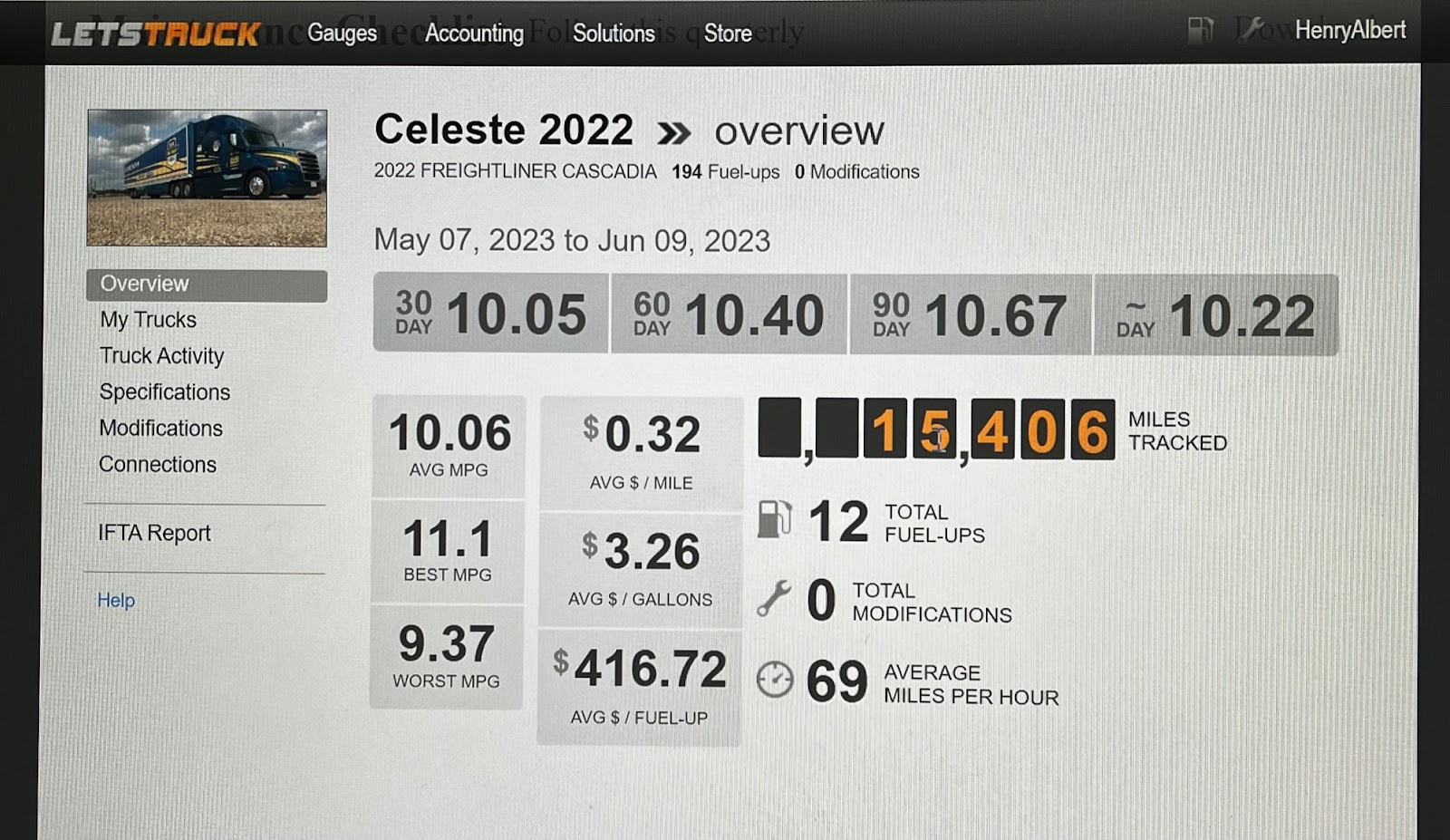After collecting data for over a month from a test run called “The Garden State Express,” we had a lot of requests to test the fuel efficiency of Celeste, our ‘22 Freightliner Cascadia, with a heavier load and more challenging elevation changes. The previous demonstration showcased the adaptability of the Hendrickson OPTIMAAX suspension on our Cascadia, as well as the additional benefits of a Hendrickson under-beam lift axle assembly on the trailer. It was nice to be able to operate on three axles and record some phenomenal fuel mileage, along with savings, from having fewer axles on the ground when paying for toll roads.
As we put together the Motor City Express test run, we decided that we would pick up a load in our hometown of Laredo, TX to deliver in Charlotte, NC for the first leg. Then we would pick up a load in Charlotte with a Quincy, MI destination. After delivering in Quincy, we had 104 miles to run empty over to Redford, MI to pick up our last load that would deliver back to our hometown of Laredo.
Typically, the loads from Laredo to Charlotte vary from 15k to 25k lbs. As it turns out, this segment kept coming in at 19k lbs. every week. This leg of the test run is the part of the trip with the highest speed limits, which we needed for us to be able to complete this run for four weeks with only a 34-hour restart, to separate each weekly run.
The first leg of the trip to Charlotte was plagued with traffic incidents, which reduced my fuel mileage all the way down to a low (relatively speaking) of 9.37 mpg on one of the 4 weeks of this exercise. On the second leg from Charlotte to Quincy, I was hoping to fill the trailer with 43k to 45k lbs. of cargo. Nevertheless, the load weights kept coming in at 32k lbs. To my chagrin, the first two weeks were riddled with construction and traffic incident delays. This yielded fuel mileage in the high 9 mpg for the first two weeks.
Surprisingly, the section of this endeavor that surprised me the most was the one from Redford, MI to Laredo, TX with 43k lbs. in the trailer. The first week yielded 9.8 mpg on this section of the run. The second week, with major traffic delays on I-35 in multiple locations from Dallas to San Antonio, yielded 9.37 mpg. I set my cruise speeds at 65 mph for the last leg of the test run during the last three weeks of the Motor City Express.
Week 3 of this last leg yielded a surprising 10.62 mpg. On a Friday leading into Memorial Day weekend and holiday travel, the traffic from Rockwall, TX (Northeast of Dallas) to San Antonio, TX appeared to be riddled with delays, as portrayed on Google Maps. I decided to bypass these cities and take US routes and State routes cutting cross country all the way to Luling, TX on I-10.
While taking a break in Luling, I visited Google Maps once again, and still saw major traffic delays to San Antonio where I would normally pick up I-35 to finish my run. The secondary routes had treated me well up to this point. So, I made the decision to stay on the secondary roads and bypass San Antonio and re-emerge onto I-35 at Pearsall. While in Pearsall, I refueled for an astonishing 10.62 mpg average for 1,621 miles, which included over 400 miles of secondary highways.
Week 4 of this test run turned out rather nicely with an 11.1 average mpg fill-up for the first segment, and a 9.76 average mpg for the segment which traversed W. Virginia. This was followed by a 10.03 average mpg for the Redford to Pearsall segment of this exercise.
I was hoping to have a much cleaner set of results than what was recorded during this 4-week period. However, I think the overall data for the 15,406 miles was a good representation of a typical dry van operation. 10.05 average mpg seemed like a pretty good outcome at the end of this Motor City Express test run.
For the specs on my 2022 Freightliner Cascadia, please click here.
